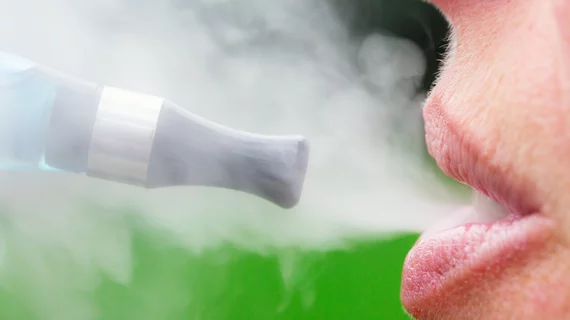Physicians release new tool to help radiologists spot, treat vaping-related lung illness
Expert physicians from the University of Rochester Medical Center have released a new guide to help physicians diagnose and treat vaping product use-associated lung injury (EVALI).
The CDC has tallied more than 2,000 cases of the illness across the U.S. so far, including 39 deaths. Many cases have been tied to products containing THC, and today, Friday Nov. 8, the CDC announced that vitamin E acetate is “very strong culprit” to blame for the outbreak.
Published Nov. 8, in The Lancet Respiratory Medicine, the new clinical practice algorithm combines case definitions and clinical guidance from the CDC with experience gained from 12 EVALI cases native to Rochester, New York.
“This is a practical and user-friendly algorithm for clinicians when they are evaluating EVALI,” co-lead author Aleksandr Kalininskiy, MD, with the University of Rochester Medical Center (URMC), said in a news release. “It provides a flow-chart for information-gathering, evaluation and treatment of patients who are experiencing this life-threatening condition.”
Physicians from URMC were the first in New York to report symptoms to state health officials, with some cases dating back to June. Since that time, toxicology and pulmonary experts have been collaborating on appropriate testing, treatment and follow-up care. This new tool incorporates those findings, seeking to shed light on the difficult-to-diagnose condition.
"This illness has been vexing for physicians across the country and we continue to see people suffering from the dangerous effects of vaping," said Daniel Croft, MD, pulmonologist at the University of Rochester Medical Center's Strong Memorial Hospital. "We expect the guide will help minimize missed diagnoses as cold and flu season ramps up."
Numerous radiology organizations have released their own updates and guidance on how to best spot and diagnose the condition.
A recent report published in Radiology: Cardiothoracic Imaging suggested radiologists look for the following criteria: e-cigarette or dabbing use within 90 days before symptoms begin; pulmonary opacities on chest x-rays or ground-glass opacities on chest CTs; no pulmonary infection at initial workup; and no evidence of another alternative diagnoses.
Click here to read more about EVALI.

